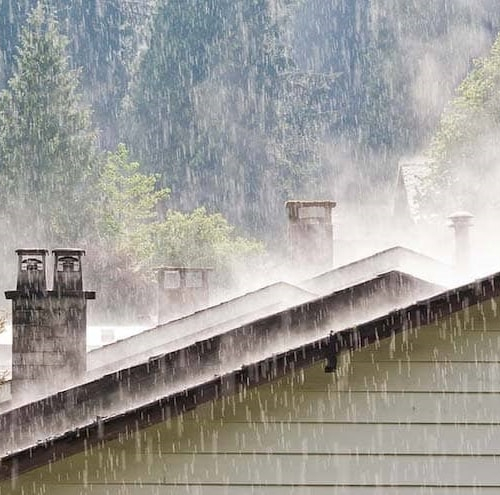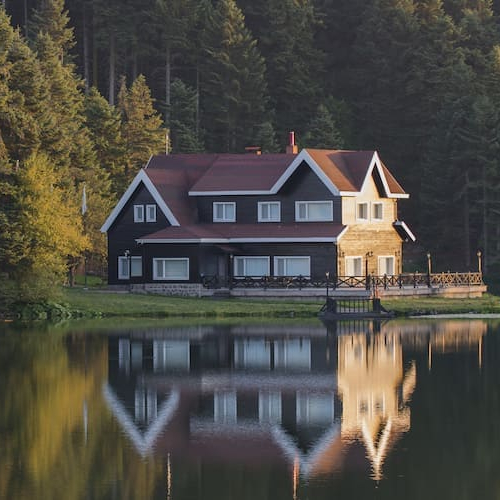Disaster preparedness plan and checklist
Contributed by Karen Idelson
Oct 30, 2025
•7-minute read

Few things can upend your entire life like a natural disaster can. Every year, disasters like hurricanes, winter storms, tornadoes, and wildfires leave people in parts of the United States displaced from their homes and without the most basic day-to-day necessities.
The effects of natural disasters can be much worse if you don’t have a clear disaster plan in place. While a plan can’t prevent a natural disaster, it can give you clear next steps, keep your family together in the aftermath of the disaster, and help minimize your financial losses.
To help you prepare for any possible disaster, this article will guide you through creating your family’s disaster plan, give you the steps you need to help recover from a natural disaster, and share the best resources to turn to in a time of need.
Steps to create a personal disaster plan
When it comes to preparing for a natural disaster, having a specific disaster plan in place can make all the difference. Everything becomes harder after a natural disaster, as utilities, communication, and access to food and water can all be limited.
But when you’ve planned ahead (and, more importantly, discussed that plan with your family), you can safely get through a disaster and minimize harm to your family. Let’s talk about how to do that.
1. Plan for common disasters in your area
One of the most important first steps of planning for a disaster is knowing what natural disasters you’re most vulnerable to. After all, the way you’d prepare for a wildfire is likely very different from how you’d prepare for a tornado or a winter storm.
If you need help figuring out the most likely natural disasters in your area, the American Red Cross website has a map that shows natural disasters by region.
Once you’ve narrowed down common natural disasters, you can make a disaster plan that fits. And keep in mind that you may need more than one disaster plan.
For example, you likely won’t use the same plan for a disaster that would require you to evacuate, such as a fire or a hurricane, as you would for a disaster that requires you to shelter in place.
Finally, don’t forget about non-natural disasters. A housefire, for example, poses a similar bad outcome to your home as a wildfire, but it requires a completely different plan. After all, one requires you to evacuate the entire area, while the other like only requires you to evacuate your own home.
A part of your disaster plan should include having emergency alerts in place. But if you’re at risk of multiple types of disasters, make sure you understand the different types of alerts you might receive so you can respond as quickly as possible.
2. Know evacuation routes
For disasters that may require evacuation – hurricanes and wildfires are just two examples – it’s important to know your tentative route. For example, would you plan to leave the area entirely? Go to the home of a friend or family member? Stay at a nearby hotel or evacuation shelter?
Your specific plan may change in the event of an actual emergency. It will, after all, depend on the nature of the disaster. But you can keep a preliminary plan in place. It’s easy to panic in an disaster, and having your first steps mapped out can provide some breathing room and peace of mind.
Make sure your emergency plan also includes a list of resources, including FEMA and your state and local emergency management agencies. When disaster strikes, you can quickly find out the current recommendations and decide on your next steps.
Finally, your emergency plan may also include designated meeting places in case you need to evacuate your home quickly due to a house fire or a similar emergency. You might plan to meet at a neighbor’s house, a nearby local business, or the home of a loved one.
3. Prepare an emergency kit
When an emergency hits, it can often be difficult to get your hands on basic necessities, especially in the first day or two.
When you’re creating your disaster preparedness plan, put together an emergency kit that includes everything you’ll need to survive for the first three days in case you can’t immediately get supplies or contact emergency management services.
Home emergency kit checklist
Every family’s needs will be slightly different, but some basic items that should be in your personal emergency kit include:
- Water (1 gallon per person per day for at least 3 days)
- Nonperishable food
- Plastic sheeting
- Blankets
- First-aid kit
- Prescription medications
- Hand sanitizer and wipes
- Multi-tool
- Flashlight
- Flares or whistle
- Extra batteries
- Battery-powered radio
- Local maps
- Cellphone and battery-powered charger
- Copies of important documents stored online
In addition to these basics, you should tailor your emergency kit based on the type of disaster your area is most prone to. Here are some examples of special supplies you may need for certain types of disasters:
- Earthquakes: Masks, goggles, work gloves, duct tape
- Hurricanes: Life jackets, water filter, glow sticks, sunscreen
- Tornado: Plywood, steel or aluminum, duct tape
- Fire: Full-coverage goggles, respirator, masks, long-sleeved shirts and pants
4. Plan for your specific needs
Your family’s disaster preparedness plan should include contingencies for your household members’ unique needs, whether it’s your children, seniors, your pets, or someone else who needs special care.
First, have a plan in place to maintain medical equipment during a power outage. In many cases, you can either get battery-operated equipment or find nearby hospitals that can provide what you need.
Next, gather your family’s essential medical documents and prescriptions. Your personal emergency kit should include critical medications like insulin that your family may need in those first few days.
Finally, decide ahead of time how you’ll evacuate members of your family with mobility issues, whether it’s loved ones with walkers or wheelchairs or a young child who can’t walk on their own.
5. Practice your plan regularly
A family emergency plan is critical, but if you make one and then years pass before you experience a disaster, there’s a good chance you’ll forget some of what you planned. Practicing your plan regularly can help keep it top of mind for everyone in the family and will ensure that, when a disaster does happen, everyone knows exactly what to do.
Put it on your calendar to practice your plan (or plans, if you have separate plans for different types of disasters) at least two to three times per year to make sure everyone remembers it.
Recovering from natural disasters
When you’re hit by a natural disaster, the most important consideration is how you’ll make it through those first few days safely and with the basic resources you need. But once the worst passes, you can move on to recovering from the disaster and getting back on your feet.
Secure your belongings
According to the Consumer Financial Protection Bureau, scammers often take advantage of people in vulnerable situations, including those who have gone through a natural disaster.
In the aftermath of a disaster, take steps to protect your identity and assets. Contact your creditors about any lost credit or debit cards and report any suspicious transactions. Destroy any documents you find with your personal information.
Finally, consider setting fraud alerts on your credit report. These alerts are added to your credit reports and let creditors know to take extra steps to verify your identity before allowing someone to take out a loan or line of credit in your name.
Document the damage
Your instinct after a disaster will probably be to start putting your house and belongings back together to make it feel like home again. But before you do that, make sure to photograph and thoroughly document all of the damage. These photographs will be critical to get an accurate settlement from your homeowners or flood insurance company.
Make a homeowners claim
Before filing your homeowners insurance claim, start by reviewing your policy document to find out your coverage and deductible. Pay attention to your coverage for your home, your personal belongings, and additional living expenses, including hotels and food.
Once you’ve done that, file your insurance claim as quickly as possible. The sooner you file your claim, the sooner you can get a resolution and the money to start rebuilding.
After filing your claim, stay in contact with your insurance agent or adjuster. Pay close attention to updates, especially if your insurance company needs additional information from you to process the claim.
Damage prevention
Right after the disaster, you may need to take steps to minimize additional damage to your home and belongings. At the same time, you don’t want to make any permanent repairs until you’ve gotten the green light from your insurance adjuster.
You should address anything that’s a safety issue or that could further damage your home, such as covering an uncovered roof or removing drywall, carpeting, or flooring after a flood to prevent mold.
As you make these temporary fixes, make sure to document any repairs and keep receipts for everything, as these should be covered by insurance.
Additional resources
Rebuilding after a natural disaster can feel overwhelming, but you don’t have to go through it alone. There are plenty of resources available to help ensure your immediate safety, as well as help you rebuild after the fact. Here are some resources to consider:
- Federal assistance programs: The federal government can help provide you with information and support after a disaster, including helping you find and apply for local disaster assistance, find housing, get access to food, and more.
- American Red Cross: After a disaster, the Red Cross provides food, shelter, medical care, and recovery plans. It has a local resource directory and can even help you connect with loved ones you lost track of.
- Small Business Administration (SBA): The SBA provides low-interest loans to businesses, homeowners, renters, and nonprofit organizations after a disaster. To qualify, you must be in a federally declared disaster area.
The bottom line: A disaster preparedness plan is critical in emergencies
A natural disaster can hit when to least expect it, so it’s essential to have a comprehensive disaster preparedness plan in place for when an emergency strikes.
When crafting your family’s disaster plan, make sure to research common disasters in your area, know your evacuation routes, put together a personal emergency kit, and practice your plan regularly. You may also have to buy special insurance, including flood insurance or earthquake insurance. And when you’re ready, start looking for the resources you need to help rebuild your life, whatever that looks like.
Finally, while this guide is a great starting point, it’s just that: a starting point. Make sure to explore other resources on disaster preparedness, including those specific to the type of disaster you’re most vulnerable to.

Erin Gobler
Erin Gobler is a freelance personal finance expert and writer who has been publishing content online for nearly a decade. She specializes in financial topics like mortgages, investing, and credit cards. Erin's work has appeared in publications like Fox Business, NextAdvisor, Credit Karma, and more.
Related resources
7-minute read
What is condemnation in real estate?
What is condemned property? Condemnation occurs when the government uses eminent domain to take property. Learn what condemnation can mean for homeowners.
Read more

7-minute read
Understanding right of survivorship: What you need to know
What is the right of survivorship? Learn how this legal principle affects joint property ownership and offers protection for surviving owners in this overvie...
Read more

6-minute read
What is vacant home insurance and why do you need it?
If you plan to leave your home unoccupied, a vacant home insurance policy can protect your property. Learn more about these policies and what they cover.
Read more